This is Not a Prison: Why Zoos are Hugely Beneficial for Animals
I have only been on steemit for a little over a week now and have received nothing but positive comments and feedback from the community (you guys are awesome)! In the comments section on my last post, I received a few comments from people who were not 100% comfortable and on board with the idea of zoos. Seeing as how many people share some negative feelings about these facilities, I thought it would be a good idea to write a post about why zoos are considered beneficial and are still in practice.
First off, many people need to forget their conventional idea of what a zoo is. They think of the old Victorian concrete facilities that do resemble prisons, where animals are unable to do much besides pace enclosures too small for them. These conditions were indeed deplorable and I believe that is what has turned many people off to the idea of zoos. Zoos in the United States are no longer structured like this (those accredited by the Association of Zoos and Aquariums have strict protocols to prevent this poor care) and have radically changed to benefit the health of the animals. Many zoos have since changed their names to “Wildlife Parks”, “Zoological Parks”, or “Safaris” because the word zoo holds so many negative connotations.
Go to almost any zoo in the United States and you will see parts of the facility shut down for renovations (or recently completed renovations). We are constantly upgrading these exhibits to better suit the animals they house. The once tiny, concrete enclosures are now far more spacious, filled with climbing rocks, trees and structures, water features, foliage and shelters from weather and guests. We understand how environment impacts animal physiology and psychology and do our best to mimic their natural habitat as best as we can. We ensure that animals have not only the space to move, but to run, swim, climb and perform any of the activities they would in the wild.
Many people complain that animals in a zoo are bored or sad, but we do take actions to keep our animals stimulated and occupied. Enrichments provide a huge variety of activities, some promoting hunting behavior, while others are beneficial for play or expressing creativity. Enrichment allows animals to harness their natural instincts even in a captive setting, and ensures that, not only are the animals getting quality exercise, but they are mentally challenged and stimulated. Look around at your local zoo and you will likely see some toys lying around animals exhibits. Go to an animal program and you will more than likely get to see enrichment in action!
But aren’t the animals lonely when housed by themselves? Generally, zoos house social species together. We understand how important social bonds are to many species and we promote that behavior. We keep herds of hoofstock, packs of canids and flocks of birds to make sure these animals never suffer and feel lonely. Keep in mind, some animals PREFER to be alone. Many species at our facility, like our bobcat, would feel more stressed by having to share its territory with another animal. Just because an animal is on display by itself, do not assume it is lonely!
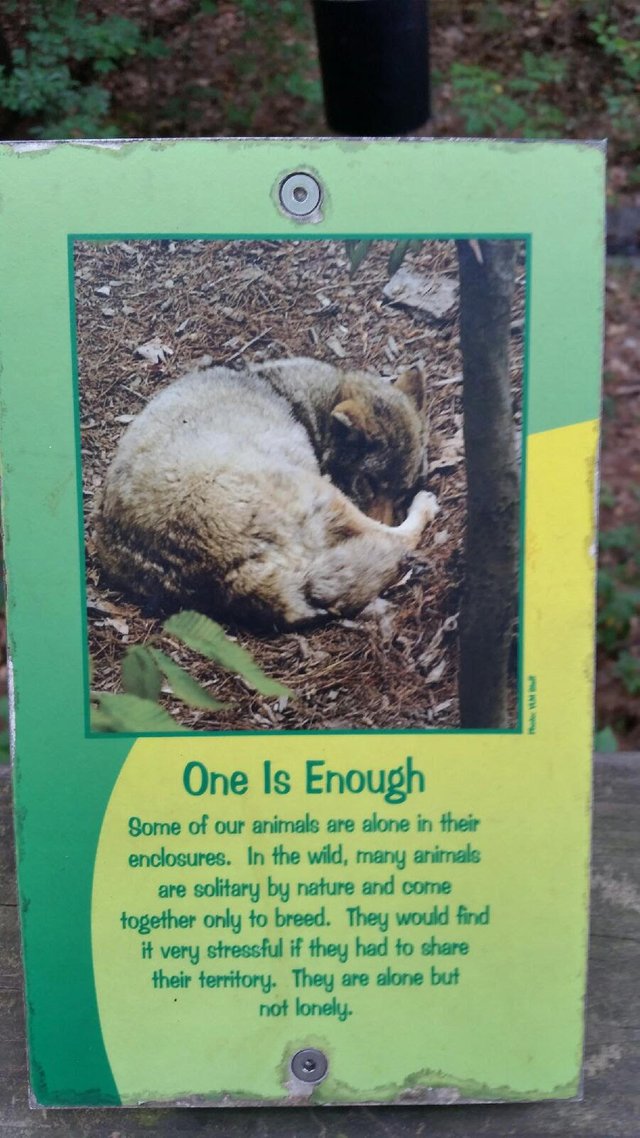
Okay, so zoos have radically improved…but isn’t it still bad to have these animals in captivity? Again, forget the concept of old zoos, when healthy animals where captured from the wild and placed in their tiny, dingy enclosures. This is really not practiced anymore (except in radical situations as explained later). Our facility, and most like it, do not capture healthy wild animals. Every animal in our facility is here because, for one reason or another, it cannot survive in the wild. We have orphans, animals that were hit by cars, illegal pets that were seized, and even a species that is extinct in the wild. These are animals that have been rescued, some from deplorable conditions, and by both law and their inability to survive on their own, will never be released. Because they are stuck here, we do our best to make them as comfortable as possible, and we use them as animal ambassadors, to educate the public and get them excited about conservation. Some healthier animals may be part of a reintroduction plan, and are on exhibit while keepers prepare them to return to the wild.
To put it simply, think of a zoo as less of a prison and more along the lines of an animal shelter; It is not the ideal scenario for an animal, but it may be their last, best chance at living a somewhat “normal” life.
Zoos are also a form of protection for many species. At the zoo, they can live without having to face many natural challenges such as predation, parasites, interspecies competition, starvation, infanticide and a host of other threats. Injuries or conditions can be treated with relative ease the moment they arise by caring keepers and competent veterinary staff. The animals are also protected from human threats, such as habitat destruction, poaching, and black market trade. We not only want our animals to be physically and emotionally healthy, we want them to feel safe!
But what is the point of zoos, other than to gawk at a bunch of captive animals?
Conservation.
Many of our species are incredibly endangered (some even extinct in the wild). Wild populations will naturally experience growth and decline, but zoos ensure that the species will not completely die out. We maintain a strong gene pool, and safeguard some animals for later release. Occasionally, a healthy animal will be pulled from the wild, generally for their own protection (this animal may be at risk for being poached or has wandered into an area where it would otherwise have to be euthanized). Animals that are sick with a treatable illness may also be brought in for treatment. Once these animals are healthy enough to make it on their own, they are put into reintroduction programs, which spend YEARS preparing these animals for their release (we want to give them every advantage we can!). We also work with local governments and communities to ensure reintroduction is as successfully as possible.
Education is huge to a zoo. All the conservation work a zoo does means nothing without the community. We exist to educate our guests about the natural world, and we bring them face to face with our animals to connect them to nature. With their help we have a better chance of aiding wild animal species and their generous contributions allow us to continuously improve the quality of life for our own animals.
It is perfectly okay to feel uncomfortable about zoos keeping animals captive, and even most zoo keepers recognize it is not the “ideal” life of an animal. But the world we live in makes zoos a necessity. Without zoos, where would injured animals be taken for treatment and release? Where would seized pets, unable to be released due to a lack of social awareness, be taken? And what would we be able to do other than watch as animal species around the world are eliminated by poaching, disease or habitat loss? We do not live in a perfect world, and zoos may not be the perfect answer, but they strive to make a better world for our species and these animals.
Please support your local zoo!
Author's note: I'm thinking about doing a “Zoo Keeper Q & A” post in the near future. If you're interested and have a question(s) you'd like answered, please leave it in the comment section below!

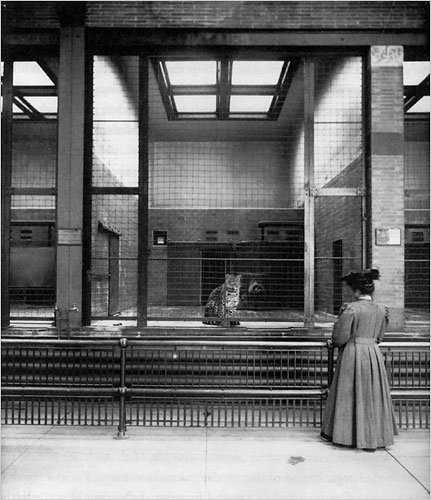
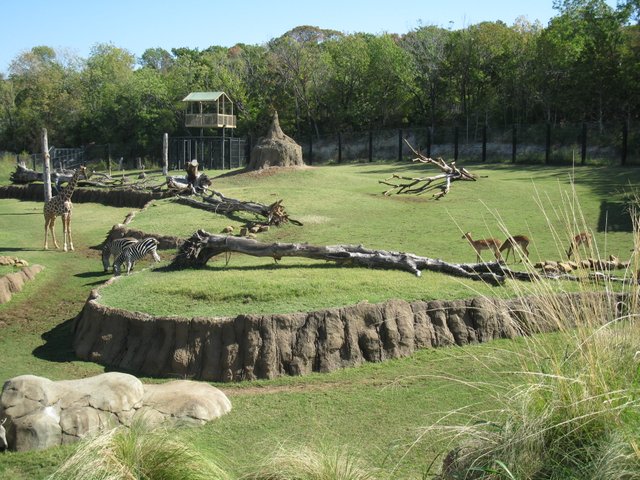




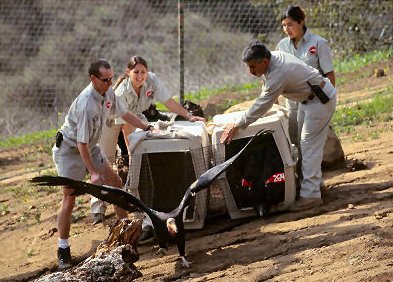
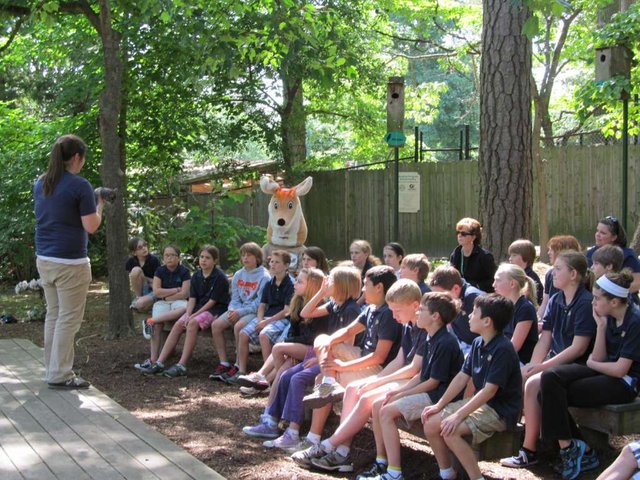
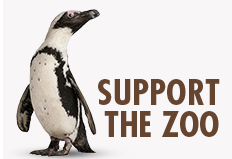
It is no good to keep animals in the cages.
For two years in a row now, we've taken our NC Governor's School students on a field trip to the NC Zoo in Asheboro, which is a perfect example of the wide-open space model. It does all of the good things you talk about. There's even a high school attached to it.
We have to spend a good bit of time debriefing them about modern zoos beforehand, because there are also a number of tiny, local, private zoos here in the state, which are probably no less well-intentioned, but are definitely less well-funded, where the animals are essentially in cages or small outdoor enclosures. Often those are the ones our students have had more exposure to. How do you address those questions, which are not based solely on historical biases?
That is a tricky one. MOST zoos are as I described above and follow protocols laid out by the AZA. Unfortunately, there are some facilities that are privately owned and decide they don't want to pursue AZA accreditation, and as such are not bound by it's rules and proceedings. Granted, they do their best and do provide service to their animals, but they aren't able to provide the large scale space that major zoos are able to provide. They are bound to provide their animals with quality medical care, good nourishment, and keep them healthy with a regimen of enrichment and exercise, or risk being shut down. To address issues with smaller exhibits, they often obtain animals that are used to these conditions (one of our coyotes was raised from a pup in someone's laundry room, and he doesn't function well in large open spaces, so we constructed a smaller play-yard for him). Again, these aren't ideal conditions, but they may be the best possible life that animal can get. When in doubt, talk to the keepers taking care of the animals (not the zoo directors or leadership) and see for yourself what kind of care they provide in contrast to larger facilities. These keepers care a great deal for their animals, and though some sacrifices have to be made, they still do their best to provide quality care.
Hopefully, with good funding and better regulations, these small facilities will be better able to accommodate their animals (most zoos start out as nothing more than a small nature center or petting zoo).
Talk to the keepers. Good point. Thanks.
Great post. Check out our Zoo visit
https://steemit.com/travel/@sunshinetraveler/trip-to-wildlife-zoo-in-naples-fl-valuable-tips-below-lifestyle-3
Great article and good points.
I did one a while ago about the various species of livestock that are dying out and going extinct because of big agriculture and mass production. If people stop raising their own heritage breeds, no one will, and we will forever lose many unique kinds of goats, pigs, horses, chickens and such. Different subject, but another way that something many people oppose (raising and eating animals) is actually beneficial for the species). - My point was, "If we don't eat them, they'll go extinct."
Likewise, many people may disapprove of zoos, but they certainly do serve a purpose and benefit animals. Great post!
yaaayy - this is what I meant on yesterdays post - Wildlife Parks - freedom to move and live in as natural habitat as possible.
Yup! Zoos really are a kinda outdated concept...most of them are zoos by name only!
Humans are specists, no doubt.
Couldnt of written that better myself! Hey from another Zookeeper! You have a follow and a vote from me :D